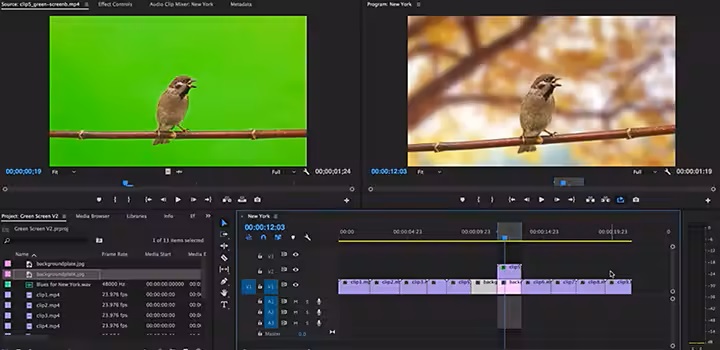It’s a trend now to use greenscreens as an easy way to create eye-catching effects and graphics that can entertain and educate all types of viewers in movies and presentations, from clients to students and more.
Did you try to find out the magic behind this green background while shooting?
One of the biggest benefits of greenscreen is that you can bend reality to your will or at least make it look that way. A greenscreen lets you provide a fantastical backdrop to whatever you’re talking about. You can present from anywhere in the world, or even from space or a fictional world! Make it look as if you’re speaking from the Egyptian pyramids, Stonehenge, Mars, or your favorite video game world. You can also stand in front of a projection of your presentation and interact with stats, graphics, and animations. Much more exciting than doodling on a whiteboard or clicking at a PowerPoint presentation, isn’t it?
All you need is a camera, editing software with a chroma key feature, and a green backdrop. To help inspire and get you started, here’s a list of the advantages of filming with a greenscreen.

But why the magic colour Green chosen for this?
It’s because of just one reason - Color Green doesn’t match any natural skin tone or hair color in you, so it’s easy to remove without grabbing parts of the person in the foreground.
But if you’re trying to match a lower-light background, or you need to have a green prop in your project, a blue screen works best.
Think about this scenario in which someone shows up in a green tie, the Ultra Key tool in the video editing software will blast a hole through their chest. Look out for colors that have just a hint of green too.
Sometimes people show up wearing khakis that are slightly greenish, what happens is they look semi-translucent. Mirrored or reflective objects can also be a problem. Also use makeup powder to get rid of shine on the face or head.
So be careful while shooting using the green background on the colors you choose to get better result.
Below is an example of a woman wearing a green dress in a green screen project. Your students might be able to think of advertisements, movies or TV shows that use the same technique.

(Photo by Farzana Cassim)
Let’s learn what a green screen does and familiarize ourselves with a few key terms.
Green Screen: Technically, this term refers to the colored background you want to make transparent and remove from your shot. This is usually a single-colored backdrop, which can be any color, but is generally bright green because it’s the color furthest away from human skin tones. (Blue screens were frequently used in the early days with film and might still be used in some instances.) Sometimes the term is used as a fit-all for the entire keying process (see below).
Chroma Key: This popular term goes hand-in-hand with green screen. It’s the actual technique of layering or compositing two images based on color hues. Every color has a chroma range, hence where the terminology comes from.
Next time when you do your school presentation bring Green Magic into it.